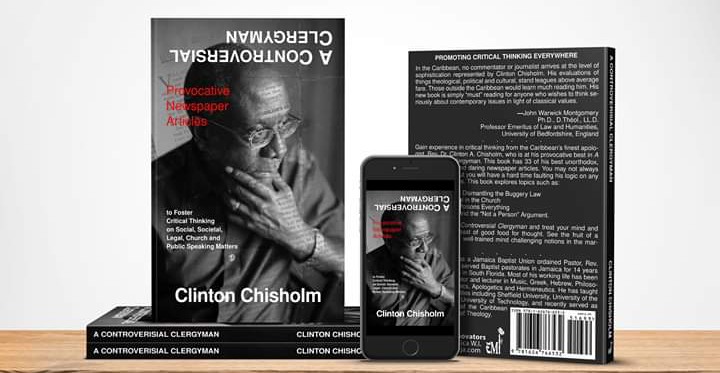Gist: Defending his provocative view on the topic

Article 29 (from my latest book, A Controversial Clergyman)
It seems that a few who read my letter to the editor about the Yellow Pages issue thought, like Mr. Robert Dalley, that I was dismissing the power of stimuli. On the contrary, I just wanted to focus on response because it is too often neglected, perhaps because it broaches the awkward notion of responsibility for whom I am and for what I do.
I am too old to be unaware of the stimulating power of a good-looking female body, even dressed normally, whether live, in a movie or in a photo. In fact, I still recall the pangs of remorse I felt when, as a Christian for only a few months (in 1967), I lusted at a prostitute while on my way to a Convention at Jarrett Park in my hometown, Montego Bay.
I had no clue then as a 17-year old boy about the practical difference between admiring and lusting. Many, many years later, after I had produced material guiding folk on how to avoid lust, I saw a well-dressed lady in Spanish Town and after one look I said to myself, “A shoulda sin fi any ooman look suh good” [It should be a sin for any female to look so good].
So yes, I do know the power of stimuli. I maintain still though that we give more serious thought to ourselves and our response, because it is no plea of mitigation to claim that women who dress to look sexy “cause you to lust”. (I know that women lust at men too but just stay with my focus here).
Beyond the notorious difficulty of proving causation I raise a simple point. Since it is incontestably true that not all men would lust at the same skimpily clad or welldressed lady, then this means that the stimulus (the lady’s body seen) though powerful is not universally coercive toward sexual arousal. The variables in a given man are many, aesthetic taste, etc., but the main point remains. You do not have to be sexually stimulated by viewing anyone’s body, no matter how ‘good’ it looks.
If you become aroused it is because you are the kind of person that can be aroused by seeing a certain kind of female body. That is why, I raised in my letter, the grains of sand stimulus and the different response of a human eye and an oyster. I know it is not the most comfortable thought to deal with, but it is not simplistic, Mr. Dalley, to suggest the thought that my response to any stimulus says more about me than about the stimulus.
Oh sure, society ought to be concerned about the possible negative impact certain stimuli could have on young minds and lives, even though we may not be able to argue for the probability, likelihood or certainty of the negative impact. While executing that critical role as guides of children and youth especially, we ought also or more so to train them in self-restraint, self-mastery and character building. Whether you are religious or not you can be trained/taught how to resist or defuse the power of certain stimuli.
Observer letter 30/12/16
QUESTIONS FOR DISCUSSION
1. What do you make of the author’s admissions in this piece?
2. How workable is the author’s suggestion in the 2nd to last paragraph?
3. Where would your sentiments be on the side of stimulus or response, and why either way?
